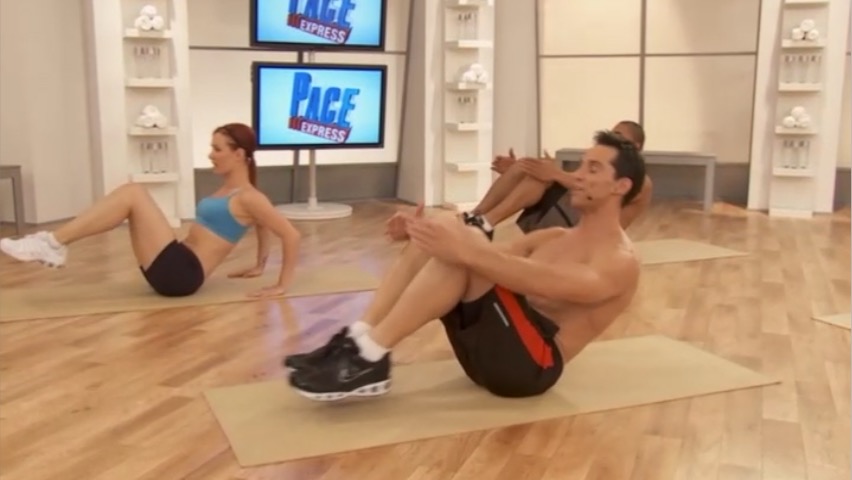I asked D.M., “What makes PACE unique?”
He said, “It’s a more intense way of doing interval train-”…
I didn’t want to interrupt him but I had to stop D.M., one of the guys on my staff, right there. That’s what everyone thinks. That PACE is about intervals. But it’s much different.
It’s true that like PACE, High Intensity Interval Training (HIIT) uses high exertion over short intervals. But it’s not the right starting point for everyone. And it is not PACE.
The problem with HIIT is that the typical deconditioned American can’t run eight 100-yard wind sprints. They are not ready to do extreme workouts.
This is why I developed PACE. I designed it to work for someone at any fitness level. No matter your current conditioning, PACE still works.
In helping people get to that level of fitness, I discovered that the journey was greater than the destination. Here’s what I mean by that…
The number one predictor of how long you’ll live is lung power. When I learned that, it struck me that fitness training had been focusing on the wrong thing. Cardiovascular endurance training doesn’t make lungs strong and healthy. It shrinks them.
So I started to think, how do I make people’s lungs strong so they can be healthier? What I did was borrow from my knowledge as a strength and fitness coach and put it together with the science I learned as a doctor.
So I’ll ask you: How do you build power in any organ or muscle?
You do the same thing fathers have been teaching their sons for generations to build bigger muscles.
If my son wanted big biceps, I wouldn’t have him lift a half-pound weight 10,000 times. I would tell him to progressively challenge his muscles by adding incremental amounts of weight. This builds muscle mass. Your muscles become bigger and more prominent.
That’s what PACE does with your lungs. You progressively challenge your maximum cardiopulmonary output through exertion.
I had a female patient who weighed 250 pounds. Her starting point for becoming fit and lean was walking for 45 seconds. That’s all she could do. That took her to her maximum cardiopulmonary exertion and she was out of breath and panting. So she would rest, and then do it again.
Walking for 45 seconds is not exactly High Intensity Interval Training. But it did progressively challenge her output bit by bit, turning her heart and lungs into giant engines of transformation.
After two years, she was 98 pounds lighter and her heart and lungs were a lot stronger with plenty of reserve capacity.
PACE works no matter where you start as long as you progressively challenge your maximum output with incremental increases.
The second component of PACE is acceleration.
As you increase your maximum output you want to accelerate the time it takes you to get there.
In other words, if it takes five minutes to get out of breath and panting, you want to accelerate that time. Try to reach that level in 4 minutes then 3 ½ minutes. You do that by accelerating your exertion.
Or, if it normally takes your heart two minutes to return to normal after a workout set, shorten that time. Give your body the signal that it has to adapt, and it will.
Here’s why acceleration is important.
By training to expand your maximum cardiopulmonary output, you expand your reserve capacity. That’s the additional energy and power you draw on when a traumatic incident or extreme stress confronts you.
The faster you can access that energy and power, the more you are shielded from a heart attack. The reason many people have heart attacks is not their lack of endurance. It’s a lack of power to access their reserve capacity fast enough when there is a sudden challenge.
So it is not enough to just build reserve capacity. It is important to be able to access that capacity almost instantly.
The unique design of PACE is to progressively build your reserve capacity and accelerate your body’s ability to access it almost instantaneously.
But there’s another benefit I’ve discovered that you get from instant access to energy… it makes you feel good. You hop right out of bed in the morning, ready to go. It gives you a sense of well-being… like you can now enjoy all the good things life has to offer.
To get started with PACE here is an example of your first workout. It’s a single period of exertion followed by recovery.
- Take your pulse and determine your heart rate at rest. The easiest way is to feel for your pulse right next to your windpipe. Count the number of beats for 6 seconds and multiply by 10. That is your resting heart rate per minute.
- Now walk, run, sprint, do jumping jacks, use an elliptical machine, swim laps, or whatever you can handle. Start at a speed and level of intensity that feels comfortable to you.
- Rest and recover.
- Do another set and increase your level of exertion until you are panting and breathing slightly. Note the time it takes you to get to this point.
- When you reach this level of exertion, stop. Now check your pulse again and determine your heart rate.
- Then recover.
- Do a second set, but increase the intensity again until you are out of breath.
- Recover again.
That’s it for the first time.
Tomorrow, do this again, with a focus on slightly increasing the challenge each time. Then, every session, incrementally accelerate your exertion or recovery.
Get started with PACE today!

